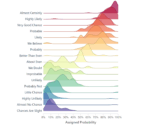In today’s fiercely competitive data-driven landscape, businesses are continuously seeking innovative ways to enhance efficiency, reduce latency, and maximize accuracy within their data pipelines. As data strategy evolves towards ever-greater complexity, organizations frequently struggle with bottlenecks related to data duplication, costly lookups, and latency-sensitive queries. Bloom filters, a space-efficient probabilistic data structure, can dramatically enhance productivity and performance in these areas. At Dev3lop, our extensive expertise across Node.js consulting services, analytics, and data innovation positions us to understand first-hand how incorporating Bloom filters can transform your data pipeline strategy—unlocking greater speed, efficiency, and business success.
Understanding How Bloom Filters Work
A Bloom filter is a probabilistic data structure designed for efficient membership testing, where it excelled by delivering results using little memory space. Unlike conventional data structures that store the entire dataset explicitly, Bloom filters rely upon hash functions that map elements into an array of bits. This clever approach rapidly determines the existence of an item without storing the complete data explicitly—achieving unmatched efficiency with minimal trade-offs.
When querying an element to test membership, the Bloom filter quickly returns either “possibly in the set” or “definitely not in the set.” Importantly, Bloom filters occasionally yield false positives, but they eliminate false negatives entirely. In other words, if the Bloom filter instructs you that an element is not present, you can be 100% certain it’s absent from the dataset. Since Bloom filters require significantly less memory than traditional methods, they become instrumental in data pipelines aiming for maximum optimization and minimal latency at scale.
Industries with immense datasets such as computing-intensive financial services frequently encounter substantial infrastructure costs and performance setbacks—read further analysis in our article on risks and drawbacks of data reliance in finance. By leveraging Bloom filters for initial existence-checking steps, your team can quickly identify non-existent data, significantly narrowing expensive search operations and cutting down valuable processing times.
Bloom Filters Accelerate Data Deduplication
Deduplication of data is one of the most critical yet challenging tasks in modern data pipelines. Duplicate entries can plague data storage, accuracy, and processing efficiency—placing additional strain on storage resources and leading to redundant analytics workstreams.
Bloom filters offer a transformative solution to these duplication challenges. By employing a Bloom filter’s highly optimized hashing mechanism to create “fingerprints” of incoming data, your teams can quickly ascertain whether new data points genuinely represent unique transactions or records. Incorporating Bloom filters facilitates rapid elimination of duplicates before consuming costly downstream resources. Users relying on advanced analytics or visualization tools like Tableau—even sharpened by custom graphics explained in our guide on creating sparklines in Tableau Desktop—can be assured they’re working with a streamlined and accurate dataset.
Implementing Bloom filters not only addresses immediate data challenges but also provides a long-term scalable approach, freeing your infrastructure from unnecessary redundancies. Decreasing duplicate data dramatically accelerates access times, streamlines analytics, and empowers faster, clearer insights into business performance. This represents a significant optimization for data-intensive activities like real-time analytics where timing and performance matter immensely.
Improving Query Performance with Quick Membership Tests
Fast, efficient query performance lies at the heart of effective data pipelines—especially those designed around real-time analytics requirements. However, scaling database queries to enormous datasets frequently presents performance bottlenecks. Complex data warehouses and architectures contend with delays from traversing large indexes and performing expensive lookups. Employing Bloom filters we can dramatically accelerate database query performance, optimize analytical workloads, and significantly lower costs associated with long-running operations.
For example, Bloom filters excel enormously well when employed as preliminary gatekeepers for database lookups. By checking Bloom filters first, databases effectively bypass performing costly searches over very large, disk-heavy tables or partitions if the Bloom filter indicates no match. By identifying data that doesn’t exist quickly, teams dramatically reduce query times, disk access, compute expenses, and overhead costs. As our analytic specialists demonstrate within our analysis on real-world ELT versus ETL scenarios, incremental optimization often compounds as datasets scale, delivering considerable long-term return-on-investment.
When integrated strategically, Bloom filters become essential for enhancing modern cloud-based real-time analytics architectures. Explore extensive tech strategies we outlined in our guide to popular real-time analytics architecture patterns. Additionally, pairing Bloom filters with advanced Node.js architectures—available from our expert Node.js consulting services—further augments your agility to handle massive concurrent requests quickly and efficiently.
Securing Data Pipelines Through Lightweight Privacy Checks
Data security and privacy considerations continue posing pressing challenges for decision-makers designing and deploying secure analytical frameworks. Adhering to numerous overlapping jurisdictions and compliance protocols, businesses need efficient ways to test membership within sensitive or restricted datasets reliably—without unintentionally leaking excessive information.
Bloom filters facilitate this securely and efficiently by offering lightweight privacy-oriented checks. Since these filters never explicitly store raw data, implementing Bloom filters allows sensitive existence checks without risking privacy breaches prevalent in raw data queries. Additionally, pipelines adopting strong compliance standards remain confidently secure against complexities associated with privacy regulations—as laid out within our comprehensive analysis on how evolving data privacy regulations impact modern analytics.
These precautions serve a dual purpose: meeting modern compliance requirements and proactively protecting businesses. Implementing privacy-first data pipeline practices through Bloom filters also places your organization at the advantageous forefront of ethical technological innovation. By leveraging these strategies, your business demonstrates an enviable proactive approach, aligning your operations closely with the industry’s future trajectory and enhancing your customers’ trust and loyalty.
Extending Potential: Integrating Bloom Filters with Advanced Technologies
The potential of Bloom filters goes far beyond traditional data pipeline optimization—integrated thoughtfully, they complement disruptive technologies like quantum computing and artificial intelligence. Given the impressive speed-ups quantum computing promises—highlighted extensively within our analysis of quantum computing’s unparalleled processing capabilities—combining Bloom filters to reduce dataset sizes before quantum analysis can accelerate quantum algorithms significantly.
Similarly, machine learning and advanced analytics pipelines often face slow, costly training cycles correlated heavily to data size. Starting analytics engines or AI/ML processes with optimized datasets marked efficiently by Bloom filters dramatically speeds up training times, optimization periods, and experiment computations—yielding demonstrable cost-reductions. Financial organizations that heavily depend upon accurate yet efficient real-time analytics illustrate substantial benefits by strategically incorporating Bloom filter technologies into overall architectures.
If your business prioritizes innovation-level impact, Bloom filters can align superbly to agile innovation models, whereby consulting specialists—following practical guidance outlined comprehensively within our exploration of why hourly software consulting surpasses traditional retainers—frequently deliver significant and measurable business outcomes quickly and more effectively.
Conclusion: Optimizing for the Future with Bloom Filters
Leveraging Bloom filters effectively within your data pipeline strategy directly unlocks unprecedented efficiency, cost effectiveness, and reliability across analytical workflows. By streamlining deduplication, accelerating queries, ensuring robust data privacy, and complementing cutting-edge technologies, Bloom filters present a powerful yet lightweight toolset essential within modern analytic ecosystems.
At Dev3lop Consulting, our strategic approach prioritizes optimizing analytics and data-driven decision-making at every operational step. Explore how our strategic recommendations on mastering modern data pipelines—such as Bloom filters incorporation—alongside targeted technical strategies like utilizing our dedicated Node.js consulting services can unlock unparalleled strategic value for your business. From strategy validation to improved innovation methodology, discover actionable techniques extending your organization’s data capabilities and success.



















